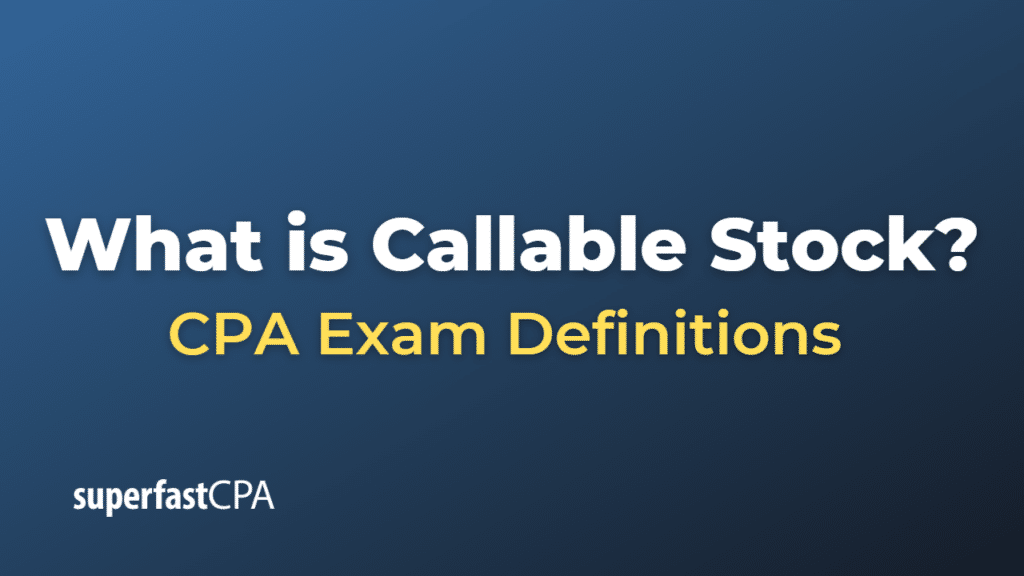Callable Stock
Callable stock is a type of equity security that allows the issuer (the company issuing the stock) the right, but not the obligation, to redeem or “call” the stock at a predetermined price before a specified date. This means the issuer can buy back the stock from investors at a specified call price, which is usually set at a premium above the stock’s market price or par value at the time of issuance.
Callable stock is most commonly seen in the form of callable preferred stock, as common stock is typically not callable. Callable preferred stock provides the issuer with the flexibility to redeem the stock early under certain conditions, such as when their financial position improves, or when they can issue new preferred stock at a lower dividend rate.
For investors, callable stock introduces reinvestment risk, as they may have to reinvest the proceeds from the called stock at lower yields if market conditions have changed since they originally invested. Callable stock may also exhibit more complex price behavior due to the potential for early redemption, which can limit the price appreciation of the stock when market conditions improve.
When investing in callable stock, it’s crucial for investors to understand the call provisions and weigh the potential risks and rewards associated with early redemption. Callable preferred stocks often offer higher dividend rates compared to non-callable preferred stocks with similar credit quality to compensate investors for the additional risks associated with the call feature.
Example of Callable Stock
Let’s consider a hypothetical example of callable stock, specifically callable preferred stock.
Suppose a company called “GreenEnergy Solutions” issues callable preferred stock with a par value of $100 and an annual dividend rate of 6%. This means each preferred share pays an annual dividend of $6 ($100 x 6%). The preferred stock has a call provision that allows GreenEnergy Solutions to call the preferred stock after six years, starting on the first call date, at a call price of $105.
As an investor, you purchase the preferred stock and receive annual dividend payments of $6 per share for holding the stock.
Six years after the preferred stock’s issuance, GreenEnergy Solutions’ financial position improves, and the company can now issue new preferred stock at a lower dividend rate of 4%. To reduce its dividend expenses, GreenEnergy Solutions decides to exercise the call provision and redeem the outstanding callable preferred stock.
As per the call provision, GreenEnergy Solutions pays you the call price of $105 to redeem each share of preferred stock before the indefinite dividend payment period. Now, as an investor, you face reinvestment risk because you have to find a new investment for the proceeds from the called preferred stock, and the current market dividend rates are lower than when you initially invested in the GreenEnergy Solutions preferred stock.
In this example, the callable stock (callable preferred stock) allowed GreenEnergy Solutions to retire its outstanding preferred stock early and reduce its dividend expenses, while the preferred stockholders faced the risk of reinvesting the proceeds at lower yields due to the early redemption. This scenario demonstrates the key features and potential risks associated with investing in callable stocks.












